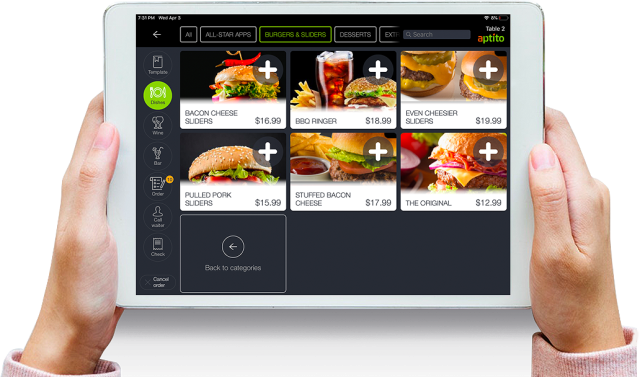The restaurant industry is battling with the stiff challenges posed by Covid-19. Unlike the pre-pandemic times, nowadays customers hesitate to visit restaurants. Many of the diners just don’t want to take a risk. As a result, restaurant sales have declined sharply. Studies show that in the United States alone, more than 1, 10,000 eating and drinking establishments were shut down in 2020. To make matters worse, the food costs are skyrocketing. Hence, for the existing restaurants to survive, it has become inevitable to focus on cost-cutting. In this scenario, technology has indeed proved to be a boon for restaurants in bringing down costs.
Top 5 ways technology aids restaurants in cost reduction
With the help of a digital, cloud-based restaurant management software, now it’s pretty easy to cut down costs. Let’s see how it works.
No more printing costs
Assume that a restaurant plans to introduce a new dish. If they are using paper menus, they have to print them all over again. There is one more cause of concern. The menus already printed cannot be used again. Also, the diners in the post-pandemic world just don’t want to use the dirty paper menus anymore. As much as possible, they prefer to stay away from touching surfaces.

Solution
With a digital menu, the huge costs of printing menus are a thing of the past. For adding a new dish, all it requires is to update details on the software. Within minutes, the new dish gets added. Unlike paper menus, customers don’t have to touch the menu. Just by scanning a QR code on their smartphones, now they can order the favorite dishes of their choice. Thus, a digital menu offers customers an absolutely safe, no-contact ordering experience. Moreover, 80% of the respondents in a recent survey preferred to order food using their personal devices over the ones provided by restaurants.
Cut down employee count
A major expense in running a restaurant is that of labor costs. As per studies, labor costs account for 45% of the total operating costs. Sometimes it can go up to 75%.
Let’s see how the food ordering process takes place in a traditional restaurant. Under the manual system, a waiter takes orders from the diner. He notes down the order details on a slip of paper. In turn, the server walks all the way to the kitchen. Now, he briefs the order details to the kitchen staff. After some time, the waiter again goes back to the kitchen. He checks whether the dishes ordered are ready. If it takes more time to prepare, he needs to wait there. A lot of time goes to waste in this process. Also, there are high chances of waiters wrongly communicating the order details.
Solution
Let’s see how the process works with restaurant management software. Now there is absolutely no need to write the orders. The waiter updates the food orders on a tablet. At the same moment, the order details get displayed on the screen in the kitchen (Kitchen Display System). Now, the kitchen staff is quite clear about which particular department needs to look into the order. Once the food is ready to be served, the waiter gets notified. Hence, the system eliminates the paper slips, and the time spent walking towards the kitchen. In short, by eliminating unnecessary delays, restaurants can cut down the headcount of waiters to the minimum.
Drastic reduction in food wastage
No restaurant wants to disappoint its customers. Hence, running short of food materials can be quite embarrassing. On the other hand, stocking raw materials in excess quantity leads to wastage and spoilage. Studies show that in a year, the volume of food waste at restaurants in the US amounts to 22 to 33 billion pounds. Hence the major challenge faced by restaurants is how to maintain the optimal stock of food materials.
Solution
Now, the software facilitates real-time tracking of inventory. Restaurant owners can monitor their inventory live from any location, anytime. Whenever the stock is nearing the reorder levels, the restaurant management gets notified. Hence there are no more hassles of running short of inventory. Also, the system helps maintain the optimum levels of stock. It eliminates the issue of inventory wastage forever.
Helps curb inventory theft
It’s shocking to notice that theft is the reason behind 75% of inventory shrinkage at restaurants. The more worrying finding is that in most of the cases, the culprits are employees. It’s just not practical for restaurant management to monitor employees all day.
Solution
With the software, the supplies and raw materials are quite secure now. Whenever there is any attempt to steal the inventory, the restaurant management receives timely alerts. Hence, the system leaves absolutely no scope for theft. Also, there is the option to pull reports on stock variance and pilferage.
No more non-performing dishes
Some dishes on the menu become an instant hit among customers. However, there are others that fail to attract diners. Such dishes ultimately lead to low sales and wastage of food. In these challenging times, restaurants cannot afford to suffer such losses. Using manual efforts, it’s just not possible to find out the performing and non-performing dishes.
Solution
Now, it’s pretty easy to get insights into the sale of dishes. The software provides detailed information about the sales volume of each of the dishes. By identifying the preferences of diners, restaurants can now focus on the most selling dishes. Also, it helps remove the loss-making dishes from the menu. Ultimately, the data provided by the software helps cut down wastage and boost profits enormously.
Conclusion
Unlike the earlier times, the expectation of diners has changed completely. However, restaurants cannot spend on extravagance anymore. It’s time for restaurants to replace human labor with technology. In the new normal, digital restaurant management software aids in bringing down unnecessary expenses to the minimum. Apart from cost-cutting, it also helps restaurants improve efficiency significantly.